Known nationwide for its delicate sweetness and classy flavor, An Giang province’s palm sugar is regarded as the quintessence of this southwestern land.
|
Sugar palm trees with the scientific name Borassus flabellifer, mainly grow in South Asia and Southeast Asia. |
An Giang has a tale about palm sugar. While taking a nap under a sugar palm tree, a farmer suddenly felt a taste of sweetness on his mouth. Out of curiosity, he climbed up the tree and found the juice streaming from spikes. He took his bamboo water container to obtain the sap and brought it home. This is how Khmer people in An Giang discover the use of sugar palm trees. As the sap will be fermented shortly after being taken from the tree, Khmer people find ways to use it to brew liquor and make palm sugar, a nutrient-rich, crystalline, completely natural and unrefined sweetener.
Going to Tri Ton and Tinh Bien districts in An Giang, one can see tall sugar palm trees shading rice fields. The time for harvesting and producing palm sugar lasts around six months, from November to May of the lunar year.
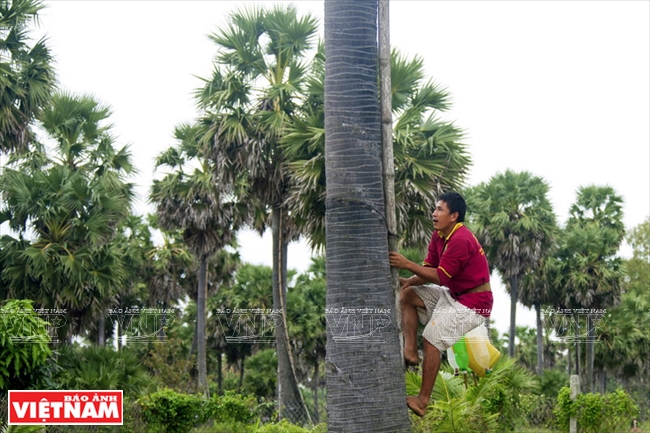
Climbing up a palm tree to get its sap, the material used for making palm sugar, a specialty only found
in the southwestern region.
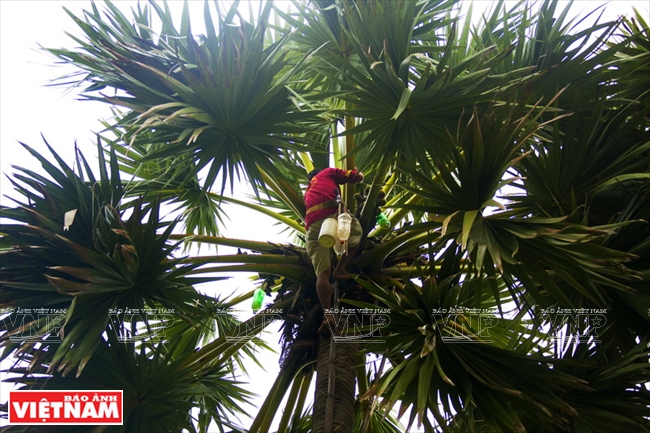
Getting the sap, the hardest job in the palm sugar making process.
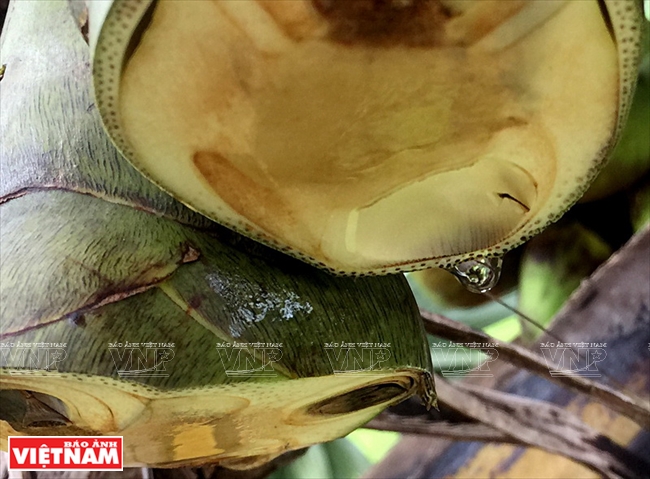
Spikes which produce the sap.
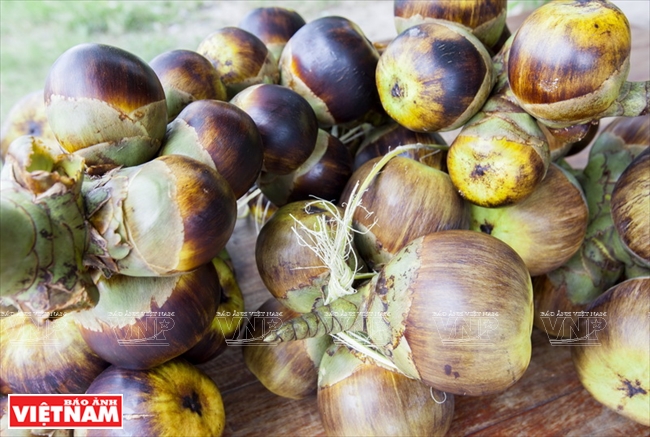
Sugar palm fruit is used as a fresh drink in summer while the old tree-trunks are material to make fine arts.
|
|
The sap from a sugar palm tree is used for making palm sugar and cakes and as seasoning in cooking. Palm sugar is also a folk remedy for coughs and asthma, and for detoxification, and improvement of the digestive system. |
The hardest job of the production process is climbing up tall trees to splint the spikes to extract the sap which will drop into plastic containers. The acquired fresh sap must be processed immediately to turn out the best quality sugar.
Nguyen Van Tuan’s family in Phu Hiep village, Tinh Bien district, has been making palm sugar for 27 years. When we spoke with Tuan, we learnt how hard and complex palm sugar was to process. First, the sap was cooked in a large pot for about 4 hours during which it must be constantly stirred with big bamboo chopsticks. When the sap turned into a form of syrup, it was stirred again until it cooled down and became solid. The finished products were then packed in palm leaves.
The sugar quality largely depends on the maker’s skills and experience, Tuan said. He then revealed an important secret that the sap must be cooked within 24 hours after its extraction, otherwise, the sugar will taste sour.
To get one kilo of sugar one needs seven litres of sap, Tuan said. He sells an average of 10 kilos of sugar a day, each kilo for 35,000 dong (roughly 1.6 US dollars). In peak months like February and March, Tuan can sell 30-35kg of palm sugar a day.
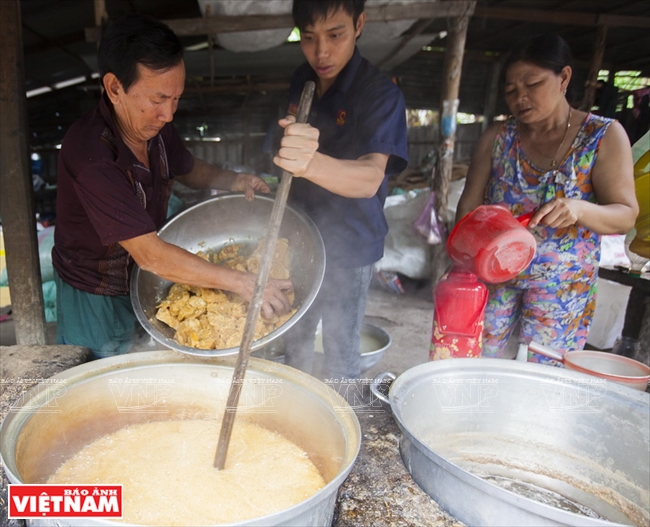
Processing a palm tree’s sap takes 3-4 hours by hand to make liquid sugar.
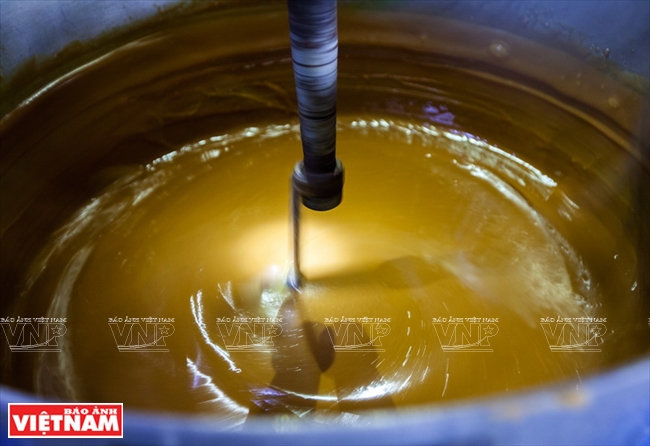
Stirring the liquid sugar by machine.
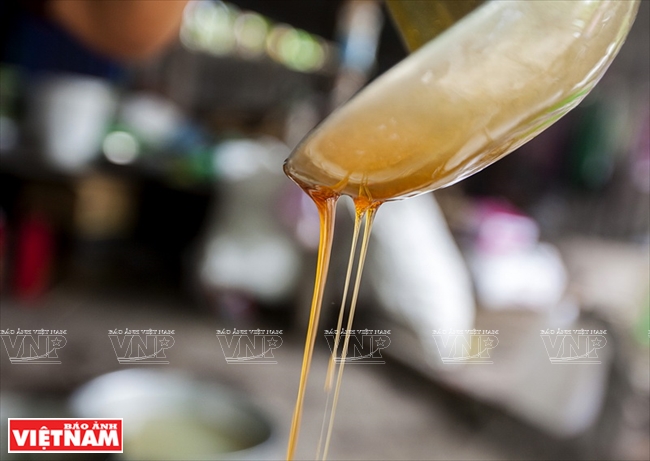
Checking the smoothness and thickness of sugar.

The liquid sugar must be filtered to ensure its smoothness.
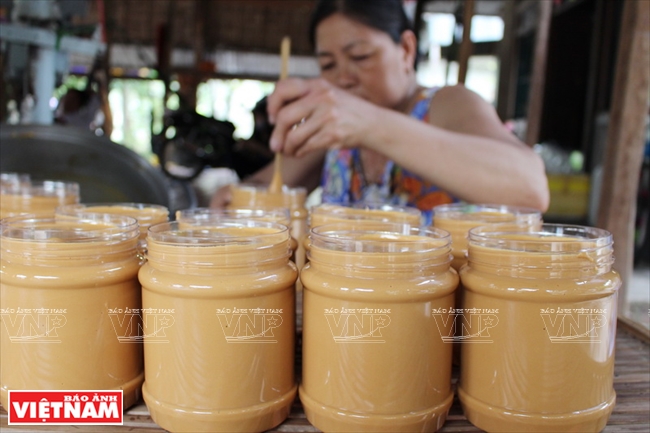
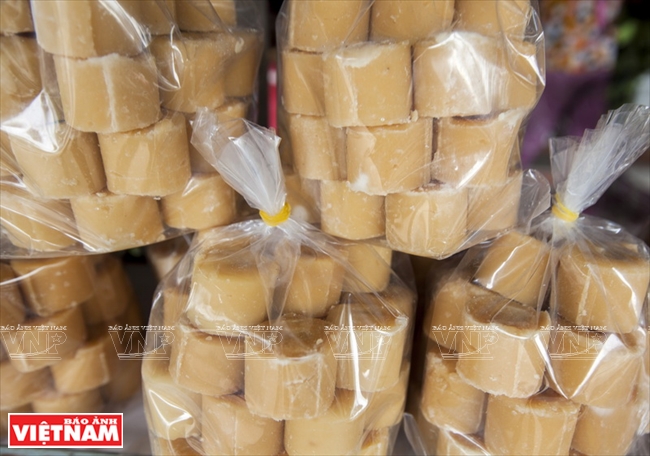
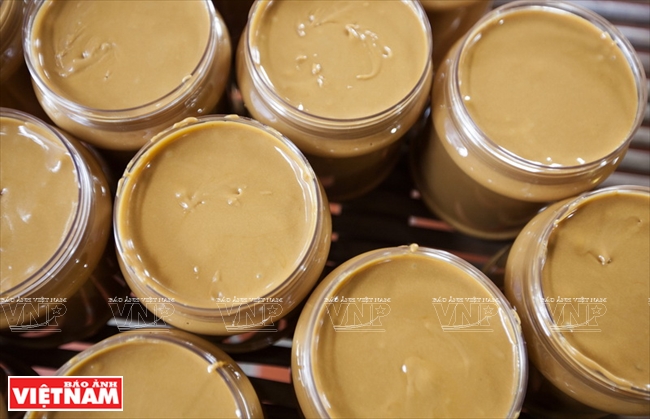
Finished products.
|
Every year, An Giang produces some 6,000 tonnes of palm sugar, including around 2,000 tonnes from Tinh Bien district alone.
The province’s specialty is popular nationwide for its natural sweetness and delicious flavor. An Giang palm sugar is also exported to Taiwan, Japan, South Korea and the US.
Story: Nguyen Oanh - Photos: Thong Hai